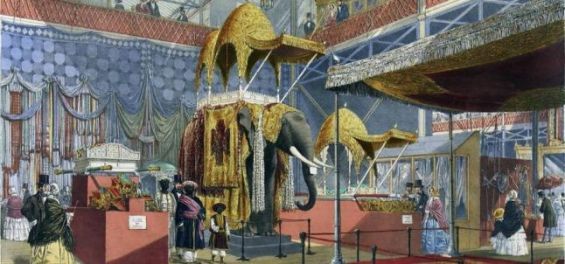«Stoke» was the name of the Indian elephant that the Sheriffian court of Sultan Hassan I owned in the 1890s. Such a giant pet from a very far land in Morocco, you might ask. The Asian beast was the precious gift of Queen Victoria to the Moroccan monarch as a token of friendship and amity between the two kingdoms.
The elephant was one of the trophies brought to India following the conquest of Burma, present-day Myanmar. Presented to the Moroccan Sultan in 1891, Stoke belonged to a famous breed called the «White elephant». He was not white at all. The elephant had «a few blotches of dingy light brown, rather than white, on the trunk, head, and ears», a postcard of the peculiar gift read.
Before it was sent to the Moroccan court, Stoke and other Burmese elephants were the prized possession of King Theebaw, the last king of the Konbaung dynasty of Burma and the last Burmese monarch in the country's history.
The great beast's majestic arrival
Stoke was sent to Morocco through Gibraltar, before ducking in the Tangier port. The arrival of this exotic and never-before-seen beast to Moroccans, was quite the spectacle for the city’s inhabitants. In a story published on August 8, 1891, an English correspondent describes the majestic arrival of Stoke to Tangier.
«Balak (take care) and Allah Akbar (God is great) were the cries heard on all sides… as the elephant Stoke, Her Britannic majesty’s present to the Sultan, was landed at Tangier», recalled the journalist.
The animal entered the city through the beach and was guided by his mahouts, Indian elephant-keepers, to the Outer Souk and then the Kasbah. Once near the city’s marketplace, the elephant «plainly showed his dislike to the perfume factories of Barbary by turning completely round and starting back again».
Such an abrupt move from a giant beast was enough to sow seeds of terror and panic among the audience that came to see the peculiar present. «The populace fled in every direction», the correspondent wrote.
In the Kasbah, a temporary shelter was made available for Stoke and his mahout and two South Asian minders. There, he was fed and taken out to exercise twice a day. He was even visited once by the then Foreign Affairs minister Haj Mohammed Torres, who was amazed at the appetite of the huge creature.
In the same article, Stoke is described as a «splendid beast, young, and a veritable ‘albino’, his markings being very fine». The journalist who had the chance to visit Stoke in his temporary home, wrote that the elephant «stands about 7 feet high, and weighs about four tons; his tusks are brass-mounted». Stoke was ornamented with a «handsome Howdah», a carriage which is positioned on his back.
The lost Howdah
Later on, Stoke was transferred to Fez, to be presented to the Sultan. In the capital, crowds gathered to see the monster. During the elephant’s parade in the city, «many women and children were knocked down and trodden to death, not by the docile beast, but by the insensate mob hastening to behold the animal in the narrow streets that lead to Mulai Idriss», reads «Morocco as it is, with an account of Sir Charles Euan Smith's recent mission to Fez».
Since his arrival in Fez, Stoke became a weekly visitor of the city’s streets. Every Friday, the elephant would follow the sultan to the great Mosque as part of his cortege. With his Howdah «studded with golden nails and gorgeous with the many-colored scarves», the weekly spectacle never failed to leave the inhabitants of the city in awe.
However, this tradition was cut short after Stoke’s Howdah was lost forever. According to the same account, three Zimour chieftains begged the sultan to borrow Stoke and bring it back with them to their tribes, in an attempt to ease a rebellion and collect taxes for the sultan.
The sultan rejected their first wish and agreed that they take with them the elephant’s magnificent Howdah as a token of them telling the truth about the great beast. And so it was, the Howdah was entrusted to them, only to be «installed in the tent mosques of the Zimoors» and venerated for «its healing qualities». «But the promised tribute under which the elephant was to stagger has not reached the Court of Fez», teh same source concluded.
Stoke, however, continued to be the sultan’s favorite pet, making appearances during festivities and religious ceremonies. On one Eid Al Adha, Stoke participated to the festivities, parading alongside horses of the sultan’s private stable. His forehead was painted with green and purple, and he marched next to his personal suite, his two Indian minders, and his ten servants dressed in green jackets.
Clearly, Stoke lived a very pampered life at the Sultan’s court. The sultan actually had expressed his desire to own an elephant years before the arrival of Stoke, during an audience with the British Minister to Morocco Sir William Kirby Green. The latter, and while presenting a toy in the shape of an elephant he had brought to one of the sultan's sons, was asked if such animal really existed.
As the British Minister confirmed the existence of elephants, the Sultan proceeded to say he wished to own one. A wish that was, indeed, made true by the British Queen Victoria.




 chargement...
chargement...












